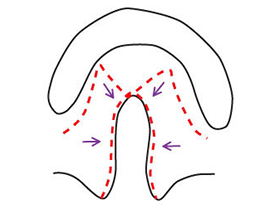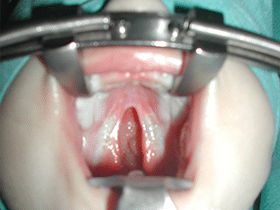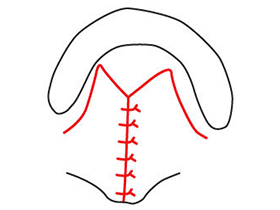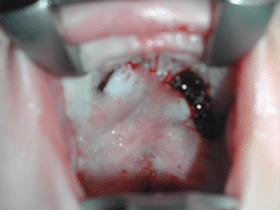The palate consists of two parts, one anterior, bony, located just behind the incisors, the other, more posterior, is muscular, it is the palate veil which ends with the uvula. The first is fixed, motionless, the second is mobile and plays an important role in speech.
During the initial examination of the baby, if a cleft palate is diagnosed, proper care is essential. If the cleft is wide and affects the anterior, bony part, a resin palatal plate is installed. This plate is maintained day and night, it avoids the interposition of the tongue in the cleft, facilitates bottle feeding and soothes the child.
Adapted baby bottles are recommended, like the Haberman bottle (from Medela®), to help the child during feeding and prevent it from lasting longer than 30 minutes. If the cleft touches the entire palate breast feeding is discouraged, inefficient even with a resin palate plate. On the other hand, the mother can draw her milk and feed the baby with a bottle.
Palate surgery is done between 4 and 6 months. A 5 day hospitalization is necessary. One of the parents accompanies the child and stays with him during this whole period. The intervention lasts one hour. It is performed under general anesthesia. Closing the cleft is always possible, even if it seems wide. There is no need for a graft or prosthesis to close the cleft. Everything is present, and like the lip, it is necessary to put the unwelded, separated elements back in their place, and to suture them.
During the closing procedure of the palate, while the child is asleep, the otologist surgeon controls the condition of the ear. If there is a serous otitis, fluid behind the eardrum, he opens the eardrum (paracentesis) and sets up a myringotomy tube (diabolo, yoyo, …).

Course of the palace surgery
Two rags are incised and raised (red line), they will be brought back (blue arrows)

Cleft palate before closing

Course of the palate surgery
Both flaps are sutured and brought back to lengthen the veil

Cleft palate at the end of surgery

Comments